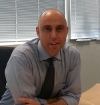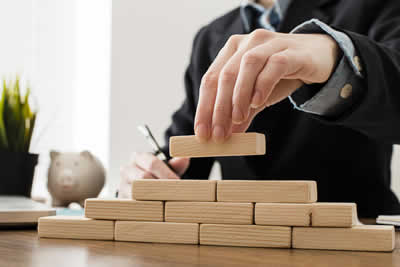The modern workplace can often be a fast-paced, high pressure environment with all sorts of urgent decisions that need to be made. Because of this, the ability to think on your feet is absolutely necessary for anyone whose job involves day-to-day management of tight deadlines that require speedy decision making.

While it goes without saying that quick thinking is imperative here, that’s really not enough. To succeed, you also need
clarity of thought to prevent rash decisions turning into a disaster. This means that developing your cognitive discipline is essential, and this is a skill that will serve you well both in the workplace and in your leisure activities.
Working It For Smarter Thinking
It’s definitely possible to boost your decision making skills by learning to think faster and smarter and, while some choose to do it through structured simulations and scenario based planning, others prefer more traditional, human-centric methods.
Our cognitive development begins from the moment we’re born and encompasses:
- Acquiring knowledge
- Thinking and reasoning
- Problem solving
- Memory
- Language development
- Perception
These skills, however, don’t have to hit a development brick wall once we reach adulthood - after all, we don’t stop exercising our muscles once they’re fully developed. By continuing to work on our cognitive development; particularly acquiring knowledge, thinking and reasoning, problem solving and perception, we can continuously hone our decision making skills.

Decision making skills are often vital within the workplace - and can be learned. That doesn’t, however, mean you have to commit to some dull corporate brain training program. The same result can be obtained by activities like in your leisure time - for example, live casino games often mirror the situational awareness and rapid decision making processes required in the boardroom - and you can read more about it
here. See what we mean?
Faster thinking without the speed bumps
When we talk about fast thinking, it's important to understand the difference between solid decision making and a panicked rush to judgement. Faster and smarter thinking isn’t about making split-second decisions without a foundation in fact; after all, poor decisions made quickly are still poor decisions. Instead, it’s is about accurate and analytical thinking - just revved up a little.
Research by Psychologist, Daniel Kahneman, puts cognitive processing into two distinct categories - System 1 (fast, intuitive) and System 2 (slow, analytical). When we feel pressured into making a decision, we’ll often go full on System 1 by default - which, in many cases, can be a mistake. Instead, effective professionals will engage System 2 even when time is tight as they understand that it's important to weigh options and verify their instincts as well as responding quickly. This allows them to reach the right decision - not just the fast one.

Getting your thinking on track
Learning to think faster and smarter is all about conditioning. Think about athletes who perform the same exercises over and over again to train their reflexes and strengthen their responses on the track or field. We can apply the same kind of training to our minds in order to achieve the mental flexibility to flip between intuition and analysis as required by a certain situation. By doing this, we learn to achieve a balance of experience and evaluation rather than relying too heavily on instinct.
Situational Awareness - Where it’s at and what comes next
In order to make solid decisions, you first need clarity and this comes from situational awareness. This is, essentially, the ability to identify and understand a situation and to then predict what may happen next. Without this cognitive map of a particular situation, you’re lost in the wilderness and will most likely make rash decisions that are little more than guesswork.
Situational awareness works on three levels:
- Perception of elements: Recognizing data, cues, and other relevant information about a situation in real time.
- Comprehension of meaning: Interpreting / understanding how those elements might connect or conflict.
- Projection of outcomes: Predicting what will happen if current conditions continue - or if they don’t.
This model is used extremely effectively by emergency response and military personnel where every second can mean life or death - but it can be equally effective for professionals; from project management to client negotiations. This is because it combines reading the environment and predicting next moves for fast and confident decision making.

Key characteristics of fast, effective decision makers
In many cases, professionals who thrive under pressure share a specific set of mental, emotional and behavioral characteristics. This secret sauce of skills allows them to power forward and make educated decisions while others are making more panicked, ill-informed choices. These traits include:
- Cognitive control: The ability to stay focused and regulate emotional responses to reduce impulsive decision making
- Pattern recognition: Drawing from past experience in order to analyze the current variables and reasonably predict results.
- Decisiveness: A willingness to act quickly once enough information has been collated
- Self-confidence: Believing in our judgment even in incomplete or high-risk situations
Making decisions under pressure vs. routine environments
The difference between decision making in high pressure or routine environments is night and day and so it’s important to recognize the characteristics and risks of each:
- Routine environment: The available information will usually be complete or predictable. You will have plenty of time for reflection, in-depth analysis and collaboration and the stakes are usually moderate to low
- High-pressure environment - The available information will often be incomplete or subject to rapid change - with limited time due to increased urgency. Speed, along with focused logic and emotional control are essential because a high stress environment can cloud judgement and lead to snap decisions.

A Game Of Two Halves
A quick Google search will throw up countless tricks, tools and frameworks for boosting your decision making skills but the following are really all you need to get started:
1. The OODA loop (Observe, Orient, Decide, Act)
Created as a tool for fighter pilots, the
OODA Loop is all about making a rapid analysis without foregoing logic. As you can imagine, these are essential tools for the fighter pilot kit and ones that you can get on board with for your own self-development and it goes like this:
- Observe the situation carefully
- Orient yourself with all the information available to you
- Decide on a course of action
- Execute the course of action
We call this a loop as these actions will repeat as necessary, helping you to navigate fluid environments where flexibility and speed are essential.
2. Pre-mortem analysis
This clever bit of mental agility training is great for preparing you for the unexpected and to speed up execution when time is not on your side. The premise here is that, instead of planning for a successful result, you assume that your decision hasn’t worked out. You then work backwards to figure out what went wrong, what the unexpected variables were and identify blind spots that you hadn’t foreseen. This can be really helpful in honing your crisis management skills to improve outcomes.

If you'd like to learn more about managing staff, why not take a look at how we can help?
Boost your team management skills with our online courses.
RRP from $33 – limited time offer just $12.99
Final Thoughts
In an increasingly competitive world, you need a great arsenal of hard and soft skills to survive. From managing a crisis to staying on top of a dynamic work environment, the ability to think clearly while acting decisively and accurately will help you to get ahead of the pack. While some are naturally born with these attributes, others need a little help and through self awareness, training and practice, you can add this essential life-skill to your toolbox for both your professional and personal life.






























